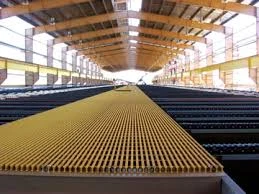
-
 Afrikaans
Afrikaans -
 Albanian
Albanian -
 Amharic
Amharic -
 Arabic
Arabic -
 Armenian
Armenian -
 Azerbaijani
Azerbaijani -
 Basque
Basque -
 Belarusian
Belarusian -
 Bengali
Bengali -
 Bosnian
Bosnian -
 Bulgarian
Bulgarian -
 Catalan
Catalan -
 Cebuano
Cebuano -
 China
China -
 China (Taiwan)
China (Taiwan) -
 Corsican
Corsican -
 Croatian
Croatian -
 Czech
Czech -
 Danish
Danish -
 Dutch
Dutch -
 English
English -
 Esperanto
Esperanto -
 Estonian
Estonian -
 Finnish
Finnish -
 French
French -
 Frisian
Frisian -
 Galician
Galician -
 Georgian
Georgian -
 German
German -
 Greek
Greek -
 Gujarati
Gujarati -
 Haitian Creole
Haitian Creole -
 hausa
hausa -
 hawaiian
hawaiian -
 Hebrew
Hebrew -
 Hindi
Hindi -
 Miao
Miao -
 Hungarian
Hungarian -
 Icelandic
Icelandic -
 igbo
igbo -
 Indonesian
Indonesian -
 irish
irish -
 Italian
Italian -
 Japanese
Japanese -
 Javanese
Javanese -
 Kannada
Kannada -
 kazakh
kazakh -
 Khmer
Khmer -
 Rwandese
Rwandese -
 Korean
Korean -
 Kurdish
Kurdish -
 Kyrgyz
Kyrgyz -
 Lao
Lao -
 Latin
Latin -
 Latvian
Latvian -
 Lithuanian
Lithuanian -
 Luxembourgish
Luxembourgish -
 Macedonian
Macedonian -
 Malgashi
Malgashi -
 Malay
Malay -
 Malayalam
Malayalam -
 Maltese
Maltese -
 Maori
Maori -
 Marathi
Marathi -
 Mongolian
Mongolian -
 Myanmar
Myanmar -
 Nepali
Nepali -
 Norwegian
Norwegian -
 Norwegian
Norwegian -
 Occitan
Occitan -
 Pashto
Pashto -
 Persian
Persian -
 Polish
Polish -
 Portuguese
Portuguese -
 Punjabi
Punjabi -
 Romanian
Romanian -
 Russian
Russian -
 Samoan
Samoan -
 Scottish Gaelic
Scottish Gaelic -
 Serbian
Serbian -
 Sesotho
Sesotho -
 Shona
Shona -
 Sindhi
Sindhi -
 Sinhala
Sinhala -
 Slovak
Slovak -
 Slovenian
Slovenian -
 Somali
Somali -
 Spanish
Spanish -
 Sundanese
Sundanese -
 Swahili
Swahili -
 Swedish
Swedish -
 Tagalog
Tagalog -
 Tajik
Tajik -
 Tamil
Tamil -
 Tatar
Tatar -
 Telugu
Telugu -
 Thai
Thai -
 Turkish
Turkish -
 Turkmen
Turkmen -
 Ukrainian
Ukrainian -
 Urdu
Urdu -
 Uighur
Uighur -
 Uzbek
Uzbek -
 Vietnamese
Vietnamese -
 Welsh
Welsh -
 Bantu
Bantu -
 Yiddish
Yiddish -
 Yoruba
Yoruba -
 Zulu
Zulu
Tank Insulation Solutions for Enhanced Efficiency and Durability
Understanding GRP Insulation Tanks A Comprehensive Overview
Introduction
In the modern world, insulation plays a critical role in various industrial applications, particularly in storing liquids at controlled temperatures. One innovative solution that has gained traction is the use of Glass Reinforced Plastic (GRP) insulation tanks. These tanks are known for their durability, lightweight nature, and superior thermal insulation properties, making them an ideal choice for different industries, including chemical, food processing, and pharmaceutical sectors.
What is GRP?
Glass Reinforced Plastic, commonly referred to as fiberglass, is a composite material made by combining resin with glass fibers. This combination results in a material that is not only strong and lightweight but also resistant to corrosion, making it suitable for various applications. GRP is often utilized in the construction of tanks, pipes, and other structures that require robust materials to withstand harsh environmental conditions.
Benefits of GRP Insulation Tanks
1. Thermal Efficiency One of the primary advantages of GRP insulation tanks is their exceptional thermal insulation properties. The composite material effectively minimizes heat loss or gain, which is crucial for industries that require precise temperature control. This feature can lead to significant energy savings and improved process efficiency.
2. Corrosion Resistance GRP insulation tanks are highly resistant to corrosion, which is particularly important in industries that handle aggressive chemicals or substances. This resistance extends the lifespan of the tanks and reduces maintenance costs, ensuring that operations remain uninterrupted.
grp insulation tank

3. Lightweight Construction GRP tanks are significantly lighter than traditional materials such as steel or concrete. This lightweight nature simplifies installation and transportation, making it easier to set up operations in various locations without the need for heavy machinery.
4. Customization GRP insulation tanks can be tailored to meet specific industry requirements. They can be manufactured in various shapes and sizes, allowing for flexibility in design and application. Custom insulation options can also be added to meet unique thermal storage needs.
5. Environmental Impact With increasing emphasis on sustainability, GRP tanks offer an environmentally friendly alternative. The materials used in GRP tanks can be recycled, and their durability further reduces the need for frequent replacements, leading to decreased waste generation.
Applications of GRP Insulation Tanks
GRP insulation tanks are versatile and find applications across various sectors. In the chemical industry, they are used to store hazardous chemicals safely. The food processing industry benefits from these tanks as they ensure that products are stored at optimal temperatures, maintaining quality and safety. In the pharmaceutical sector, GRP tanks are essential for the storage of sensitive materials that require precise temperature control.
Conclusion
In conclusion, GRP insulation tanks represent a significant advancement in storage technology across various industries. Their thermal efficiency, corrosion resistance, lightweight design, and customization capabilities make them a preferred choice for many applications. As industries continue to seek cost-effective and sustainable solutions, the popularity of GRP insulation tanks is likely to grow, paving the way for innovations that prioritize safety, efficiency, and environmental stewardship. Embracing this technology could lead to enhanced operational performance and reduced environmental impact, benefiting both industries and the planet alike.
Latest news
-
Exploring the Benefits of Top Hammer Drifter Rods for Enhanced Drilling PerformanceNewsJun.10,2025
-
High-Precision Fiberglass Winding Machine for GRP/FRP Pipe Production – Reliable & Efficient SolutionsNewsJun.10,2025
-
FRP Pipes & Fittings for Shipbuilding - Corrosion-Resistant & LightweightNewsJun.09,2025
-
Premium FRP Flooring Solutions Durable & Slip-ResistantNewsJun.09,2025
-
Premium Fiberglass Rectangular Tanks Durable & Lightweight SolutionNewsJun.09,2025
-
Tapered Drill String Design Guide Durable Performance & UsesNewsJun.09,2025









